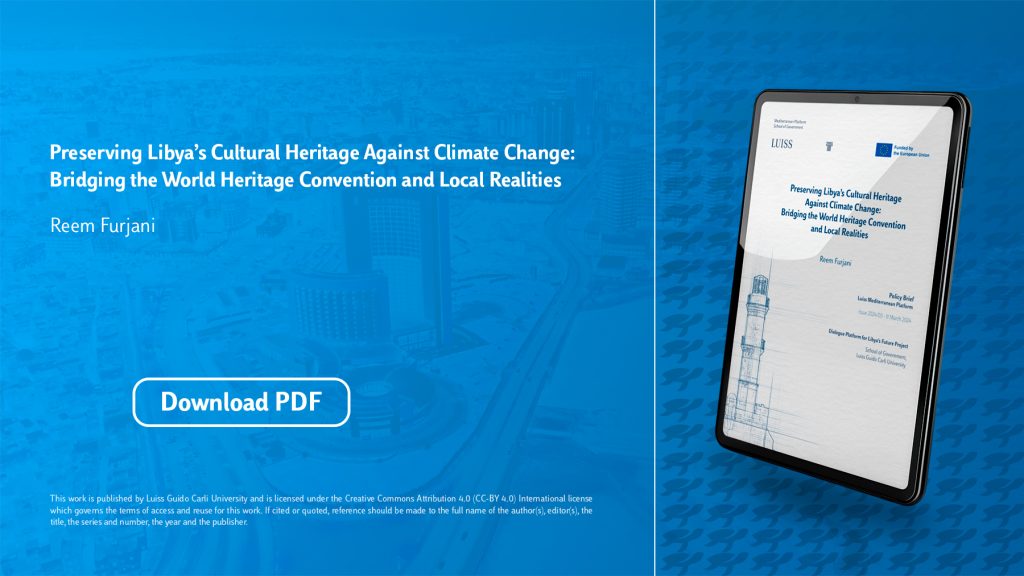- Reem Furjani
Climate Change and Cultural Heritage in Libya: Global Initiatives and Policy Frameworks
Libya’s ancient cities demonstrate the country’s historical importance as a cultural, economic, and political setting and point of exchange across the Mediterranean. These cultural heritage sites provide insights into the region’s history and serve as symbols of identity and socio-cultural and economic resources for local communities. However, Libya’s heritage is now increasingly vulnerable to the escalating threats of climate change. Potentially damaging waves are expected at least once in the next 10 years and a chance of a tsunami in the next 50 years.2 An estimated 5% of urban areas will be impacted by 1 metre of sea-level rise.3 This places Libya’s coastline, where 95% of the population lives, at alarming medium-to-high risks.4 For example, ongoing coastal erosion is evident in the archaeological site of Sabratha, while the submerged city of Tibuda and the devastating floods of Derna in 2023 demonstrate the scale of the hazards. Other risks include desertification, landslides, increased moisture levels, droughts, and displacement of communities leading to a loss of local knowledge about heritage.
Global concern over the risks of climate change on cultural heritage has prompted various international and regional initiatives to raise awareness, mitigate risks, adapt to changes, and document potential losses. At the forefront of global action is UNESCO’s 1972 World Heritage Convention, which Libya ratified in 1978. Discussions about climate change impacts on world heritage began in 2005 during the 29th session of the World Heritage Committee; during which Decision 29 COM 7B.a:
“encourages all States Parties to seriously consider the potential impacts of climate change within their management planning, in particular with monitoring, and risk preparedness strategies, and to take early action in response to these potential impacts”.5
A working group was accordingly formed to develop a report titled ‘Predicting and Managing the Effects of Climate Change on World Heritage’. This report assessed risks and led to a Strategy Document for implementing management responses. The Strategy was endorsed during the 30th session, and a Policy Document on climate change impacts was in turn published. The Policy Document was adopted by the 16th General Assembly and endorsed by the World Heritage Committee at its 31st session, outlining the duties and obligations of State Parties under the Convention; stating that, “this provision will be the basis for States to ensure that they are doing all that they can to address the causes and impacts of climate change”.6 Additionally, UNESCO acknowledges that these provisions for World Heritage sites attract considerable attention and can therefore influence the adoption of good management practices for non-listed sites also. This demonstrates the influential importance of the Convention.7

